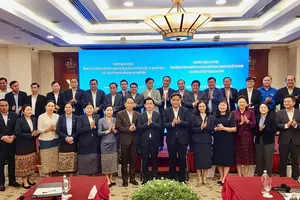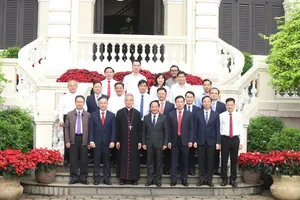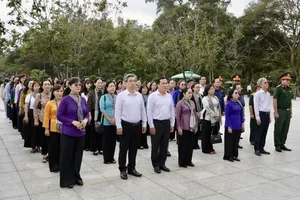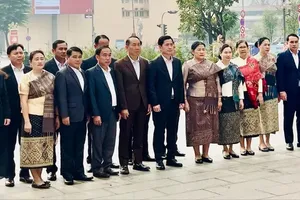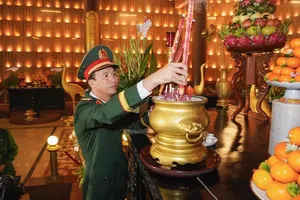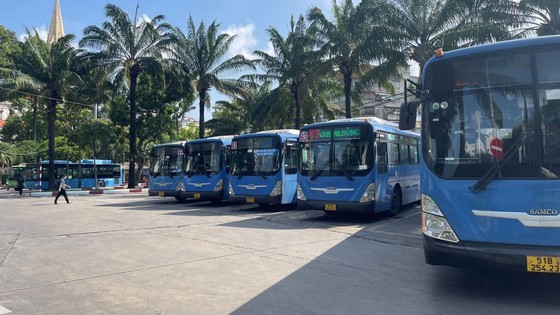 |
Bus fleets in 23/9 park |
In 2020, the Ho Chi Minh City People's Committee approved a project to increase public passenger transportation combined with controlling the use of personal motor vehicles participating in traffic in the area. The project sets the goal of sustainable development of public passenger transport by 2025 to meet 15 percent of people's travel needs and increase to 25 percent by 2030.
However, the efforts to increase public passenger transportation while controlling the use of personal motor vehicles seemed to be unrewarded because the number of private vehicles continues to increase, making bus operations more difficult.
Explaining the reason why she no longer uses buses to go to work, resident Dao Xuan Nguyen in Thu Duc City said that from home to the company in the center of Ho Chi Minh City, she will have to take 4 bus stops for the trip with the costs about VND30,000 (US$1.220) per day. If the weather is favorable and the sidewalks are clear and clean, this cost will be acceptable. However, the weather is becoming more and more extreme, not to mention the sidewalks are always occupied by shops, so pedestrians often have to walk down the street, which is very dangerous. Furthermore, during morning and afternoon rush hours, buses often arrive late due to traffic jams.
According to the woman, many days, when she got on the bus, she thought everything was fine, but the bus had a traffic jam, and she had to get off the bus and catch a motorbike taxi to get to work on time. Finally, after thinking and thinking again, she decided to use a motorbike to go to work.
Buses and personal vehicles are caught in the flow of traffic, resulting in buses’ late arrival at bus stops; therefore, bus transport companies have complained about this many times. Mr. Phung Dang Hai, General Director of Ho Chi Minh City Bus Cooperative said that recently, every time heavy rain causes flooding, traffic jams take place. From the beginning of the rainy season until now, all buses were stuck in the middle of private vehicles in 10 days of deep flooding.
Currently, the number of passengers transported on each new bus is about half of this compared to before the epidemic. Routes that were always crowded in the past, such as the route from the city center to the university village in Thu Duc City, are now also struggling to attract customers. Many students who had taken buses before no longer sit on a bus because buses sometimes have arrived at bus stops late while students must come to school on time, especially during exam season.
In current conditions, Deputy Director of the Ho Chi Minh City Management Center of Public Transport Le Hoan said that the Center has asked transport businesses to regularly maintain and repairs means of transport to ensure the quality of vehicles serving passengers. At the same time, the Center also conducts inspections and resolutely does not allow poor-quality vehicles to carry passengers. In addition, the Center has also opened new bus routes according to the bus route network list; with attention to expanding the connection network to areas with great travel demand in new urban areas such as Tay Bac, Thu Thiem, Hiep Phuoc.
Talking about the big bottleneck in passenger transport by buses that is how buses come to bus stop on time, the Center's leaders said that in the coming time, they will coordinate with the Department of Transport to organize priority lanes for buses to improve operating speed and ensure punctuality in passenger service.
However, many transportation experts said that this is a very difficult task in the context that Ho Chi Minh City cannot control the operation of private vehicles. Most routes are so overloaded that separate lanes to buses during peak hours are impossible.
According to the Institute of Transportation Development and Strategy, to protect the environment and limit traffic accidents, public vehicles must still be prioritized for development. The city needs to apply solutions to control personal motor vehicles to reduce the density of personal vehicles participating in traffic during rush hours, reducing congestion and traffic conflicts in the central area.
Moreover, the city should focus on implementing smart transportation projects and walking space in the city center area. Finally, the city should ask schools to arrange learning time to avoid rush hours.


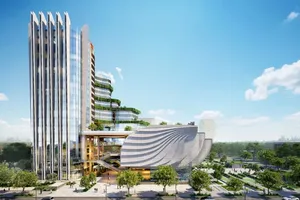
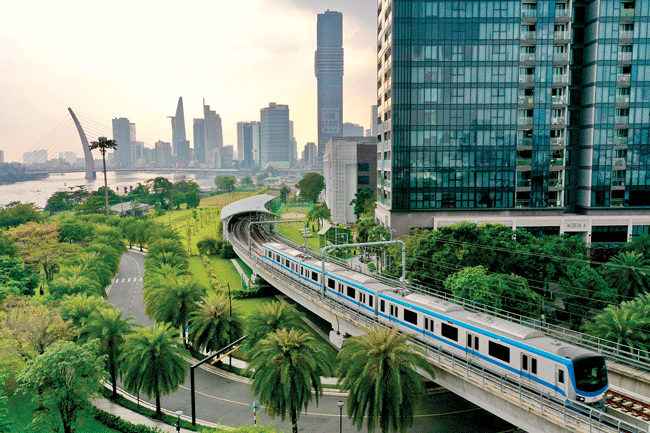
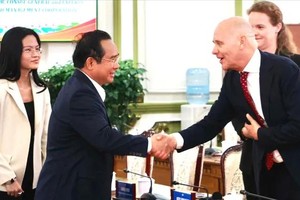


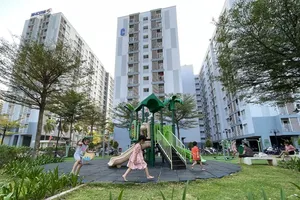
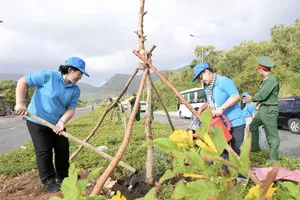
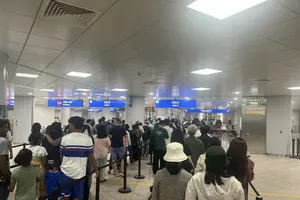
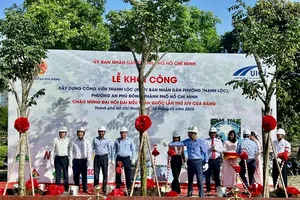

)
